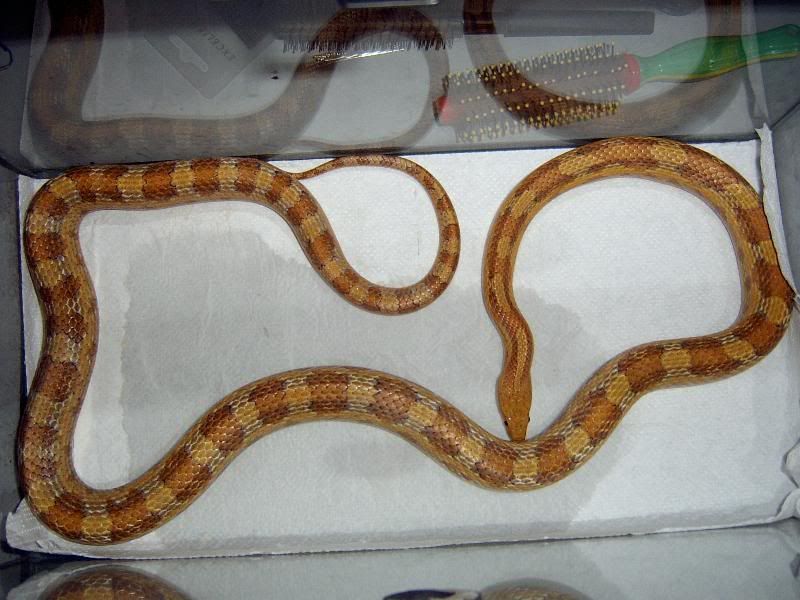Zee,
I use to think that I could switch males for the second clutch and he would be the father of the second clutch. This year I switched 4 males for the second clutch. The resulting offspring would have been obviously from the second father. For example, Snow Motley X Amel Motley het Snow for the first clutch would produce all Motleys. I switched to an Opal for the second clutch and should have gotten all amels het Opal, but I got all Motleys.
I did the same thing with my Crimsons. I bred them to a Hypo Lav male for the first clutch and produce all Crimsons het for Lavender. I switched males to a Striped Lav male and should have gotten all Normals het for Hypo Striped Lavender. I did this with two females. What did I get out of two clutches?. All Crimsons and one Amel. The first male I bred the females too, produced all of the second two clutches except for one Amel. The Striped Lav was het amel and I guess the Crimson was too.
My point is that you can not switch from the wild caught male to a Caramel carrier for the second clutch and produce Locality Corns that are het for “Golden” Okeetee for the first clutch and then test breed her to a Caramel carrier for the second clutch. In both cases, you will hopefully get all normals, but it would not prove a thing. Sperm retentions from the first male is a very real occurrence.
If it was me, I would decide which male that I wanted to bred the Golden Okeetee to the first year and try to double clutch her with the same male. The next year, I would switch males and either produce locality corns or test bred her to a Caramel which ever you did not do the first year.
It sounds like you want to bred her to the Orange wild caught male that you captured near by the first year. I would try to double clutch her to the same male and hopefully produce a lot of Normals that are carrying the Golden gene if it works out that way. If by some miracle he is het for Golden then you will produce 50% Goldens and 50% Normals het Golden.
This is why some people have stated that it is unfortunate that it is a female in this case. You can only really bred her to one male each year. If it was a male, the sky would be the limit.
I am into trying to produce new morphs so if I owned the Golden Okeetee, I would test breed her to a Caramel carrier the first year. Something like a Butter Motley. Hopefully, you would produce all Normals het for Golden Butter Motley. It takes two years to raise these babies up to breed them to one another and to mom. The second year, I would breed her to a locality Corn to create my locality line with her. The third year, I would breed her back to one of her sons from the Butter Motley X Golden breeding and breed several clutch mates together. If the Golden gene is simple recessive, you will produce 50% Goldens and 50% Normals out of the Het Golden Butter Motleys X Golden. When you breed the Het Golden Butter Motley X same you will have the opportunity to produce several new morphs if the Golden gene is a simple recessive gene like: Amel Goldens,( A Snow or Butter type snake, Motley Goldens, and the list goes on and on, to possibly a Golden Butter Motley. (Homo Golden/Amel/Caramel and Motley.
After the second year you would know if the Golden gene is simple recessive and reproducible. The third year you could either breed her to a Locality Male Het Golden and produce 50% Goldens and 50% Hets Golden that would be locality Corns, or start a new project with her, like Golden X Bloods, or Golden X Lavender, or just about anything else.


